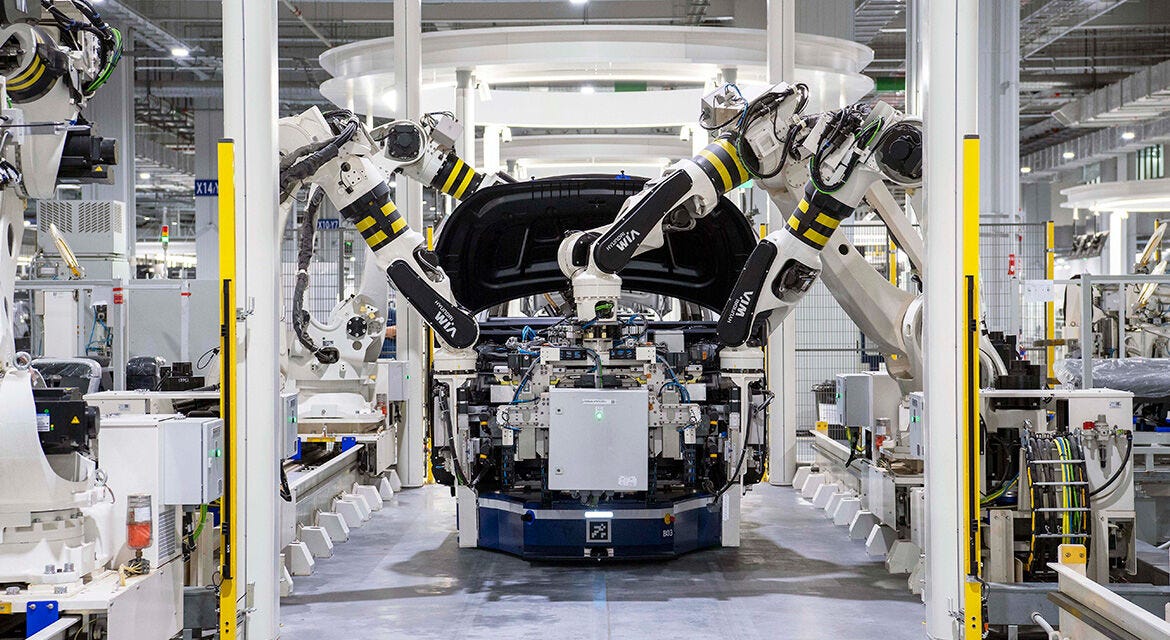Hyundai’s Successor Kingdoms
The South Korean industrial giant fragmented into separate conglomerates in a botched succession. Two of them provide crucial heavy industrial capacity on demand to the U.S.-aligned world.

In 2023, together with all its majority and minority holdings, the South Korean conglomerate Hyundai Motor Group claimed revenues of approximately $311 billion and an employee headcount of 313,000.1 The same year, HD Hyundai—another conglomerate—reported revenues of about $44 billion and 14,000 employees.2 If combined, the revenues of all the companies bearing the Hyundai name would have totaled about 21.7% of South Korea’s national GDP, slightly more than Samsung.3 Like Samsung, these conglomerates are chaebols, groups of affiliated companies run by the same family. While today Hyundai Motor Group and HD Hyundai have no formal ties to each other, they and other minor Hyundai chaebols are all descended from the founder of the original Hyundai Group, Chung Ju-yung, and are controlled by different arms of the Chung family. Hyundai Motor Group is the third-largest auto manufacturer in the world and HD Hyundai is by some counts the world’s single largest shipbuilder.4 Both conglomerates are giants of heavy industry that, between them, also smelt their own steel, refine their own oil, make their own machinery and spare parts, and build trains, nuclear plants, tanks, and more.

